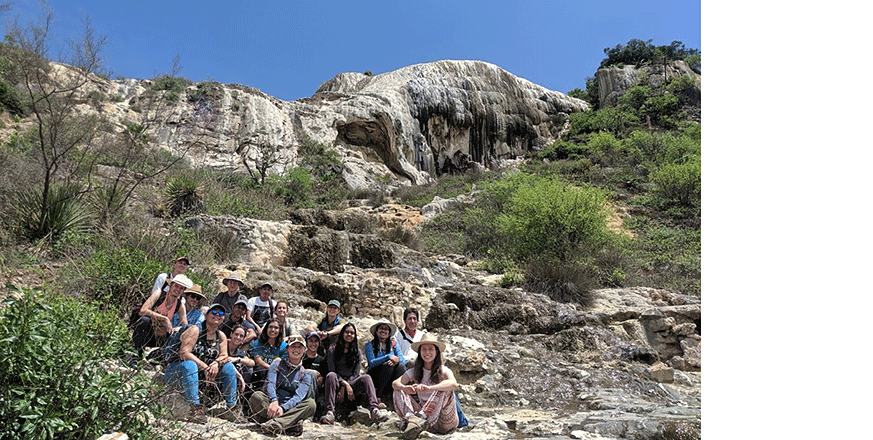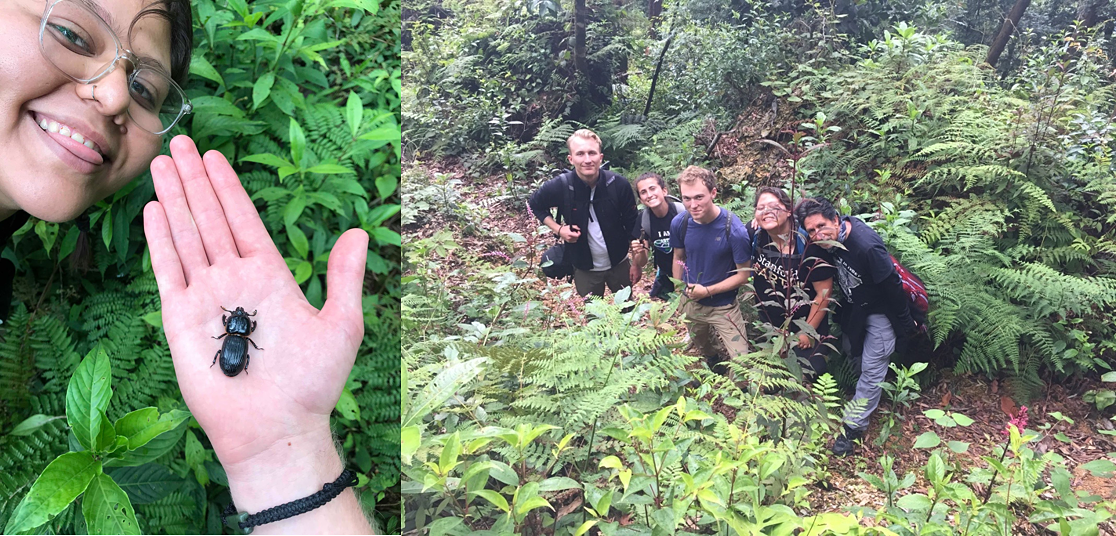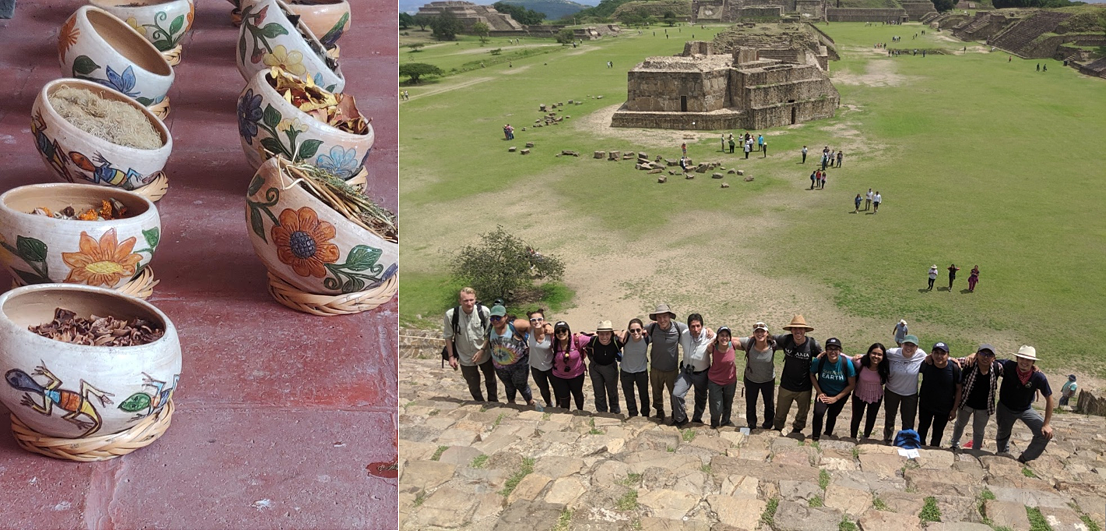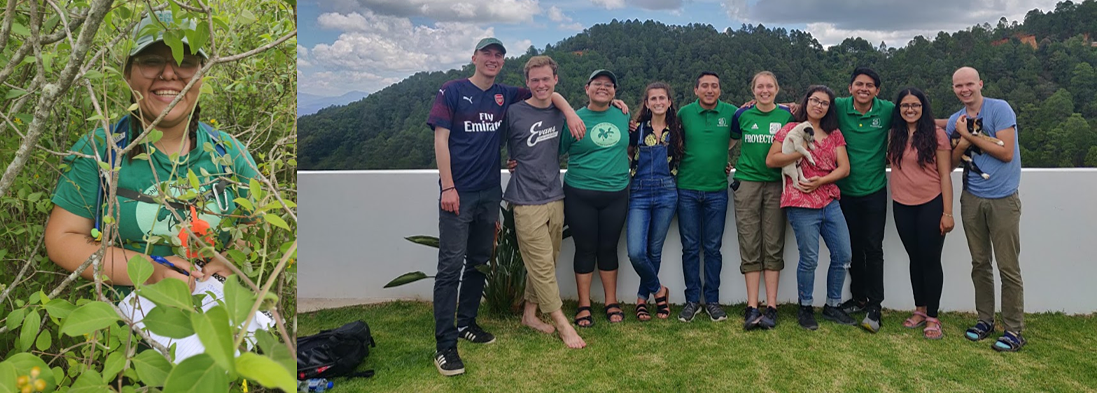Notes from the Field: Judith Santano – From Jasper Ridge to Oaxaca

Throughout my entire Stanford career as an Earth Systems major, I have focused on learning about the many different intersections of the ecological and human dimensions in environmental science. I still remember sitting in Earth Systems 10 during my sophomore year watching Rodolfo Dirzo’s lecture on how the study of biodiversity in Latin America is strongly connected to the country’s cultural diversity. It was the first time I felt that this was the kind of environmental science that I wanted to pursue at Stanford. I spent the next couple of years learning about the foundations of ecology, while also discovering how the many aspects of my identity - a first generation, low income, Mexican - influences the ways I observe, ask questions and process scientific work. When I learned about Rodolfo’s Bio-Cultural Diversity and Community-Based Conservation in Oaxaca seminar that focuses on the biocultural diversity of Oaxaca, I knew that it would be the perfect way to round out the end of my career at Stanford.
For the entirety of our month-long seminar to Oaxaca, Mexico I was in awe of the beautiful ecosystems we explored, the cultural richness we learned about, and the delicious food that constantly kept me full during the seminar! I had always heard how wonderful Oaxaca is and since my family is from Oaxaca, I knew I had to experience it myself in order to really appreciate how incredible it is. Our days consisted of travelling to various parts of the state and witnessing the vastness of Oaxaca’s incredibly diverse ecosystems. From standing around the tree ferns under the cloud forest, to hiking the caves where maize was domesticated, I was frequently thrilled to be experiencing new environments through both ecological and cultural lenses. We were very fortunate to have many opportunities to interact with and learn directly from the members of the communities we visited. We heard about the ways that they conceptualize their own relationships with their environments, and how their daily lives, values, and views of the world are shaped by these ecosystems.

Judith with wood-boring beetle from the cloud forest in Ixtlán de Juárez and members of the seminar hiking through the ferns in a Oaxaca forest (pictures by Judith Santano and Audrey Eva Bennett).
Thanks to the many new biocultural perspectives presented during the seminar, I had the opportunity to experience how the people of Oaxaca and their ecosystems are interconnected. The people and the ecosystems have shaped each other through stewardship activities, such as agricultural practices that have sustained them for millennia. This seminar was an incredibly refreshing experience. I visited a place where the narrative of people’s relationships with the environment was centered on Indigenous, Mexican communities. Another important thing I have learned while at Stanford is that a stronger science is the science that centers around the lives of real people. I’m glad this seminar was a glimpse into what science looks like and can achieve when people are at the center of how we observe, ask questions and think about solutions with communities in various environments.

Bowls holding various plants, fruits, and nuts, that will be used to make natural dyes in a textile workshop in Teotitlán. Group picture visiting and learning the cultural perspective of the Zapotec culture while visiting Monte Albán (pictures by Judith Santano and Gabriela Nagle Alverio).
It was a constant topic of conversation that many of us in the Oaxaca biocultural seminar were also alumni of the BIO 105/ EARTHSYS 105: Ecology and Natural History of Jasper Ridge Biological class. Thanks to the Jasper Ridge class, there were many familiar tasks performed while in Oaxaca including doing field surveys with the Gentry plot method and we were excited to be so familiar with the methods. Except this time instead of being wary of poison oak, we stayed away from the spines of various Acacias and the sting of “Mala Mujer” shrubs. Every day we were out in Oaxaca’s ecosystems, I couldn’t help but feel the connections to Jasper Ridge. Though we were in a very different environment, the skills we were using were the ones I first developed during my time in the Jasper Ridge class. Even something as simple as how to observe and describe an ecosystem carefully, it was something I first learned at Jasper Ridge and was able to apply and practice in Oaxaca.

Judith setting up a field survey and members of the Bio-Cultural Diversity and Community-Based Conservation in Oaxaca that were also part of the Jasper Ridge Biological Preserve course BIO105/ESYS105.
Being in this seminar with wonderful earth-loving humans, learning about incredibly complex and rich socio-ecological histories, integrating the human-context and sense of place, felt like a very intense Jasper Ridge class. I’m grateful that I had the opportunity to discover that I felt as wonderfully joyous and curious as I did in my first field course experience during my Jasper Ridge class. I hope this will be the case in all of my future endeavors!
 Judith Santano (BS ‘19), is an alumni of the Earth Systems Program and BIO 105 program.
Judith Santano (BS ‘19), is an alumni of the Earth Systems Program and BIO 105 program.



